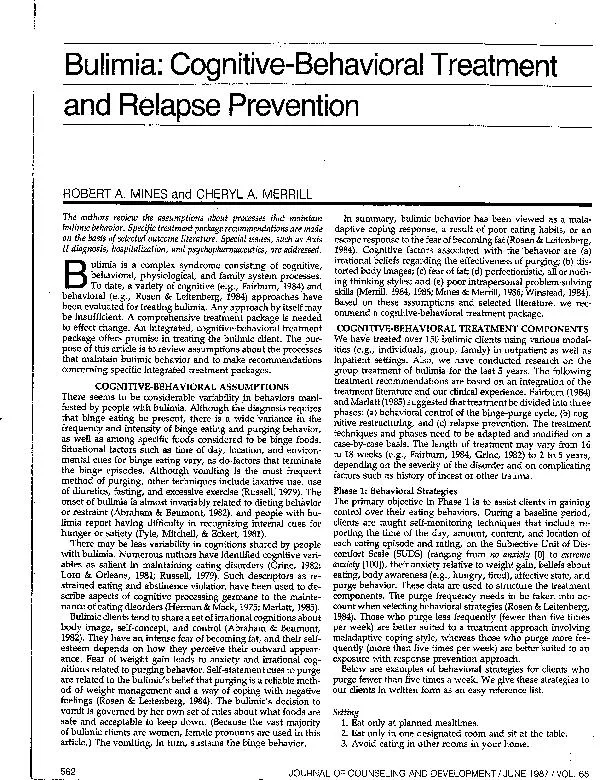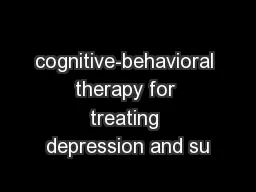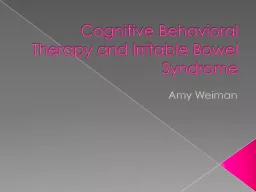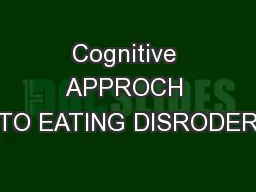PDF-Bulimia: Cognitive-Behavioral TreatmentROBERT A. MINES and CHERYL A. M
Author : test | Published Date : 2016-03-04
CognitiveBehavioral TreatmentFood1 Eat a portion from each of the major food groups each day4 Buy small quantities and individually packed portionsEating1 Try the
Presentation Embed Code
Download Presentation
Download Presentation The PPT/PDF document "Bulimia: Cognitive-Behavioral TreatmentR..." is the property of its rightful owner. Permission is granted to download and print the materials on this website for personal, non-commercial use only, and to display it on your personal computer provided you do not modify the materials and that you retain all copyright notices contained in the materials. By downloading content from our website, you accept the terms of this agreement.
Bulimia: Cognitive-Behavioral TreatmentROBERT A. MINES and CHERYL A. M: Transcript
Download Rules Of Document
"Bulimia: Cognitive-Behavioral TreatmentROBERT A. MINES and CHERYL A. M"The content belongs to its owner. You may download and print it for personal use, without modification, and keep all copyright notices. By downloading, you agree to these terms.
Related Documents














